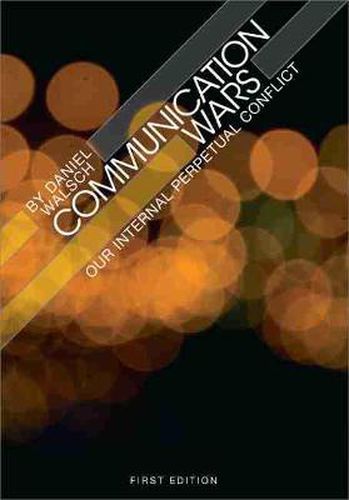Readings Newsletter
Become a Readings Member to make your shopping experience even easier.
Sign in or sign up for free!
You’re not far away from qualifying for FREE standard shipping within Australia
You’ve qualified for FREE standard shipping within Australia
The cart is loading…






This title is printed to order. This book may have been self-published. If so, we cannot guarantee the quality of the content. In the main most books will have gone through the editing process however some may not. We therefore suggest that you be aware of this before ordering this book. If in doubt check either the author or publisher’s details as we are unable to accept any returns unless they are faulty. Please contact us if you have any questions.
Communication Wars: Our Internal Perpetual Conflict looks at the fundamental needs that drive us as human beings, and explores how those needs help determine the way we communicate. Rather than focusing on public relations and communication as strategies for promoting a product or representing a client, the book examines them on a very human, day-to-day level as they appear through the lens of history.
Part I of the book deals with the theoretical aspect of communication. It examines communication in a historical context, beginning with national independence, and focuses on specific theories of mass communication including the Magic Bullet Theory, Diffusion Theory, and the Shannon-Weaver Model of Communication. This section also discusses behavior and communication, and introduces specific theorists such as Abraham Maslow and Edward Bernays. Part II revisits events and eras to apply these various theories, using them to enhance understanding of the role communication plays in our interpretation of history. Part III introduces Mutual Adjustment Theory, and Part IV charts possible courses for the future in educational reform and leadership training.
Communication Wars highlights the practicality of public relations in our daily lives, and demonstrates how communication theories can be applied to our shared past. The book is a strong complement to standard public relations and communications textbooks.
$9.00 standard shipping within Australia
FREE standard shipping within Australia for orders over $100.00
Express & International shipping calculated at checkout
This title is printed to order. This book may have been self-published. If so, we cannot guarantee the quality of the content. In the main most books will have gone through the editing process however some may not. We therefore suggest that you be aware of this before ordering this book. If in doubt check either the author or publisher’s details as we are unable to accept any returns unless they are faulty. Please contact us if you have any questions.
Communication Wars: Our Internal Perpetual Conflict looks at the fundamental needs that drive us as human beings, and explores how those needs help determine the way we communicate. Rather than focusing on public relations and communication as strategies for promoting a product or representing a client, the book examines them on a very human, day-to-day level as they appear through the lens of history.
Part I of the book deals with the theoretical aspect of communication. It examines communication in a historical context, beginning with national independence, and focuses on specific theories of mass communication including the Magic Bullet Theory, Diffusion Theory, and the Shannon-Weaver Model of Communication. This section also discusses behavior and communication, and introduces specific theorists such as Abraham Maslow and Edward Bernays. Part II revisits events and eras to apply these various theories, using them to enhance understanding of the role communication plays in our interpretation of history. Part III introduces Mutual Adjustment Theory, and Part IV charts possible courses for the future in educational reform and leadership training.
Communication Wars highlights the practicality of public relations in our daily lives, and demonstrates how communication theories can be applied to our shared past. The book is a strong complement to standard public relations and communications textbooks.